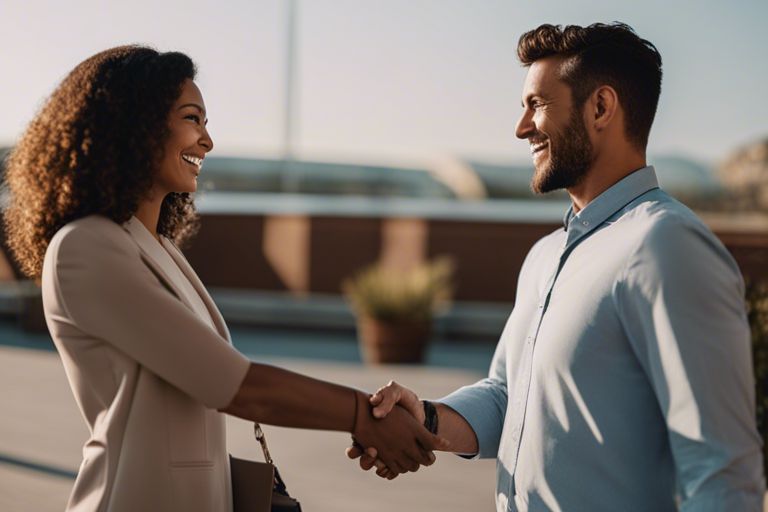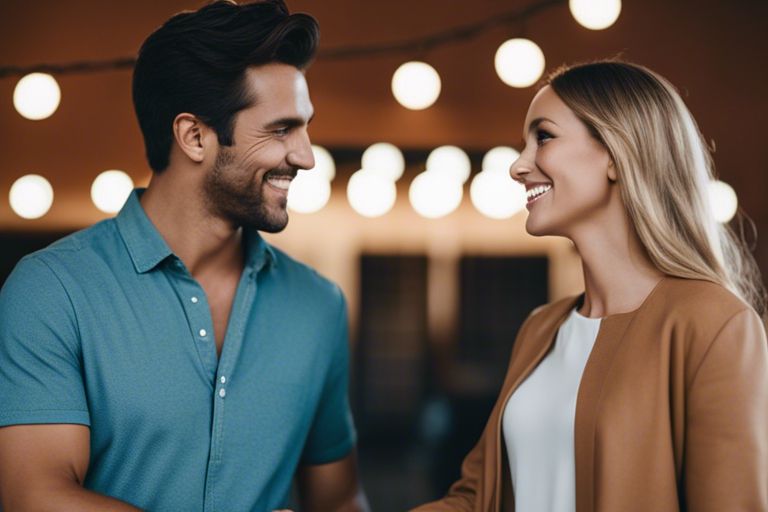Relationships thrive on effective communication, and body language plays a crucial role in how we convey our feelings and emotions to others. By using positive body language, you can enhance your relationships and create a stronger connection with those around you. In this guide, we will explore the importance of positive body language and provide actionable tips on how to incorporate it into your daily interactions to improve your relationships.
Fundamentals of Positive Body Language
Facial Expressions
Before delving into the world of positive body language, it is crucial to understand the impact of facial expressions. Our faces are powerful communicators, conveying emotions and intentions without words. A genuine smile can instantly create a connection, while a furrowed brow may signal tension or discomfort. Being mindful of your facial expressions can significantly enhance your relationships.
Posture and Gestures
Now, let’s focus on the vital aspects of posture and gestures. Your body posture speaks volumes about your confidence and openness in a relationship. Standing tall with shoulders back exudes self-assurance, while crossed arms may indicate defensiveness or disinterest. Likewise, gestures such as nodding in agreement or maintaining eye contact demonstrate active listening and engagement.
Gestures play a crucial role in positive body language. Open gestures, such as keeping your palms visible and avoiding fidgeting, convey trust and receptivity. On the contrary, closed-off gestures like crossing your legs or arms can create barriers in communication. By being mindful of your posture and gestures, you can foster a positive and welcoming environment in your relationships.
Strategies for Using Positive Body Language
Tips for Projecting Openness and Interest
While verbal communication is crucial in relationships, body language plays a significant role in how we connect with others. To project openness and interest, maintain eye contact, nod in agreement, and lean forward slightly to show engagement. Avoid crossing your arms or looking distracted, as these signals can convey disinterest. The key is to appear approachable and attentive.
- Maintain eye contact.
- Nod in agreement.
- Lean forward slightly.
The more you demonstrate a genuine interest in the other person through positive body language, the stronger your connection will be.
How to Mirror and Build Rapport
Clearly, mirroring is a powerful technique to build rapport and establish a connection with someone. Mirroring involves subtly mimicking the other person’s gestures, expressions, and body language. This subconscious mirroring can create a sense of understanding and unity, enhancing communication and fostering a closer bond with the other person.
Strategies for mirroring include matching the other person’s posture, adopting a similar tone of voice, and mirroring their facial expressions. By mirroring effectively, you can establish a harmonious and empathetic connection with the person you are interacting with.

Factors Affecting Body Language Interpretation
After understanding the basics of body language, it’s crucial to consider the factors that can affect how it is interpreted. These factors can vary from cultural differences to personal boundaries. Any misinterpretation can lead to misunderstanding and conflict in relationships.
Cultural Considerations
The way body language is perceived can differ greatly across cultures. Gestures that are positive in one culture may be offensive in another. It’s important to be aware of these cultural nuances to avoid unintentionally giving off the wrong signals.
Personal Space and Boundaries
One’s personal space and boundaries play a significant role in how body language is interpreted. Different individuals have varying comfort levels when it comes to physical proximity. It’s crucial to respect others’ personal space and be mindful of their boundaries to ensure effective communication.
For instance, in some cultures, maintaining an arm’s length distance is considered respectful, while in others, close proximity is a sign of engagement and trust. Being sensitive to these differences can help establish positive relationships and avoid misunderstandings.
Implementing Body Language Techniques in Different Types of Relationships
To effectively implement body language techniques in various types of relationships, it is crucial to understand the specific dynamics and nuances that come with each. By being mindful of your body language, you can significantly enhance communication and foster positive connections in different spheres of your life. Here is a breakdown of how body language techniques can be applied in different relationships:
| Family Relationships | Friends and Social Connections |
| Professional Relationships | Romantic Relationships |
| Acquaintances and Networking | Mentorship and Guidance |
| Conflict Resolution | Personal Growth and Self-Improvement |
| Parenting and Caregiving | Community and Social Activism |
In Romantic Relationships
Relationships flourish when there is open and positive communication between partners. In romantic relationships, body language plays a crucial role in expressing emotions, building intimacy, and strengthening the bond between partners. Maintaining eye contact, mirroring each other’s gestures, and using touch to convey affection are all powerful ways to enhance connection and understanding in a romantic relationship. Being aware of your body language can help create a safe and loving environment where both partners feel valued and respected.
During Professional Interactions
Body language speaks volumes in professional settings. From job interviews to client meetings, how you present yourself non-verbally can impact the outcome of your interactions. A firm handshake, maintaining good posture, and active listening are all imperative elements of positive body language in a professional environment. A confident and open posture can convey professionalism and trustworthiness, while nodding and using appropriate gestures show engagement and attentiveness in conversations. Assume that your body language influences how others perceive you in the workplace, and strive to make a positive impression through mindful non-verbal communication.
For more insights on how positive body language can impact business and personal relationships, check out How Positive Body Language can help improve business and personal relationships.

Overcoming Challenges and Misunderstandings
Recognizing and Correcting Negative Body Language Habits
With self-awareness and a willingness to change, one can recognize and correct negative body language habits that may impede the quality of relationships. Start by observing your own body language cues and understanding how they may be perceived by others. Common negative body language habits to watch for include crossed arms, lack of eye contact, or fidgeting. By consciously making an effort to adjust these habits, you can convey positivity and openness in your interactions.
Dealing with Mixed Signals and Misinterpretations
Any form of miscommunication or misunderstanding in a relationship can be frustrating, especially when it stems from mixed signals or misinterpretations of body language. With open communication and a willingness to clarify gestures or expressions, you can address any discrepancies promptly. To avoid confusion, it’s important to encourage dialogue and ensure that both parties are on the same page. Misunderstandings can often be resolved by asking clarifying questions and actively listening to the other person’s perspective.
Dealing with mixed signals and misinterpretations can be challenging, but it is crucial for maintaining healthy and strong relationships. Remember to approach these situations with empathy and patience, as misunderstandings are a natural part of human interaction. By addressing any discrepancies promptly and openly, you can build trust and understanding in your relationships.
Conclusion
Presently, positive body language plays a vital role in improving relationships. By being mindful of your body language cues, you can enhance communication, build trust, and establish stronger connections with others. Remember to maintain open and welcoming gestures, make eye contact, and mirror the body language of the person you are interacting with. These small adjustments can have a significant impact on the quality of your relationships, both personally and professionally. Practicing positive body language will not only improve your interactions with others but also boost your confidence and overall presence in social situations. Ultimately, mastering positive body language is a powerful tool that can help you navigate relationships with greater ease and effectiveness.
FAQ
Q: Why is positive body language important for improving relationships?
A: Positive body language is important for improving relationships because it helps establish trust, credibility, and empathy in communication.
Q: What are some examples of positive body language gestures?
A: Examples of positive body language gestures include smiling, making eye contact, nodding in agreement, and mirroring the other person’s body language.
Q: How can I use positive body language to show interest in someone during a conversation?
A: To show interest in someone during a conversation, you can use positive body language by facing the person directly, leaning in slightly, and maintaining eye contact.
Q: What role does good posture play in positive body language?
A: Good posture is vital for positive body language as it conveys confidence, attentiveness, and respect towards the other person in a conversation.
Q: How can I use positive body language to resolve conflicts in relationships?
A: You can use positive body language to resolve conflicts in relationships by staying calm, listening actively, and being open-minded to the other person’s perspective.
Q: What should I avoid when trying to use positive body language in relationships?
A: Avoid negative body language gestures such as crossing arms, avoiding eye contact, and fidgeting, as they can create barriers in communication and convey disinterest.
Q: How can I practice and improve my positive body language skills?
A: You can practice and improve your positive body language skills by observing others’ body language, seeking feedback from trusted individuals, and consciously adopting positive gestures in your daily interactions.



